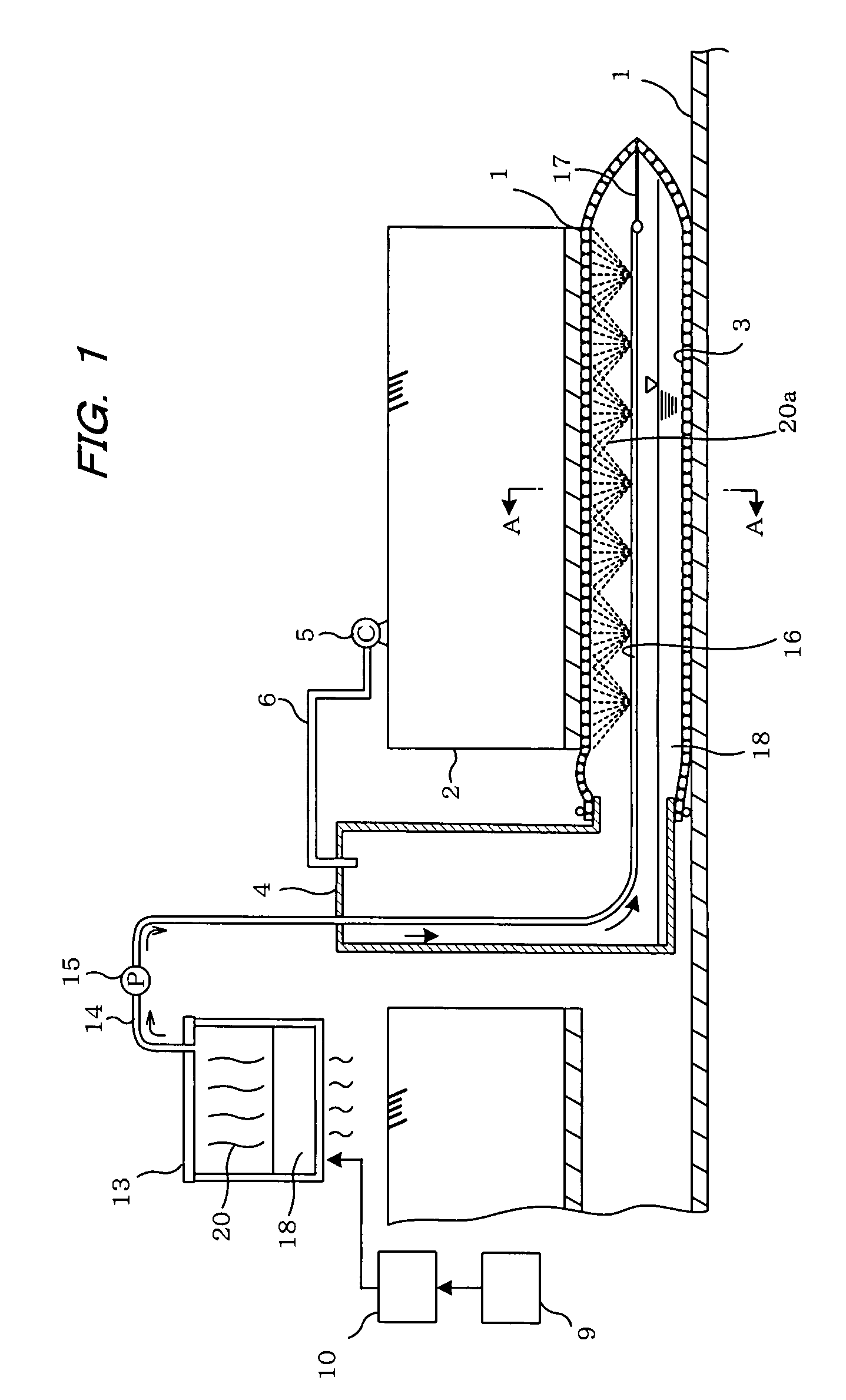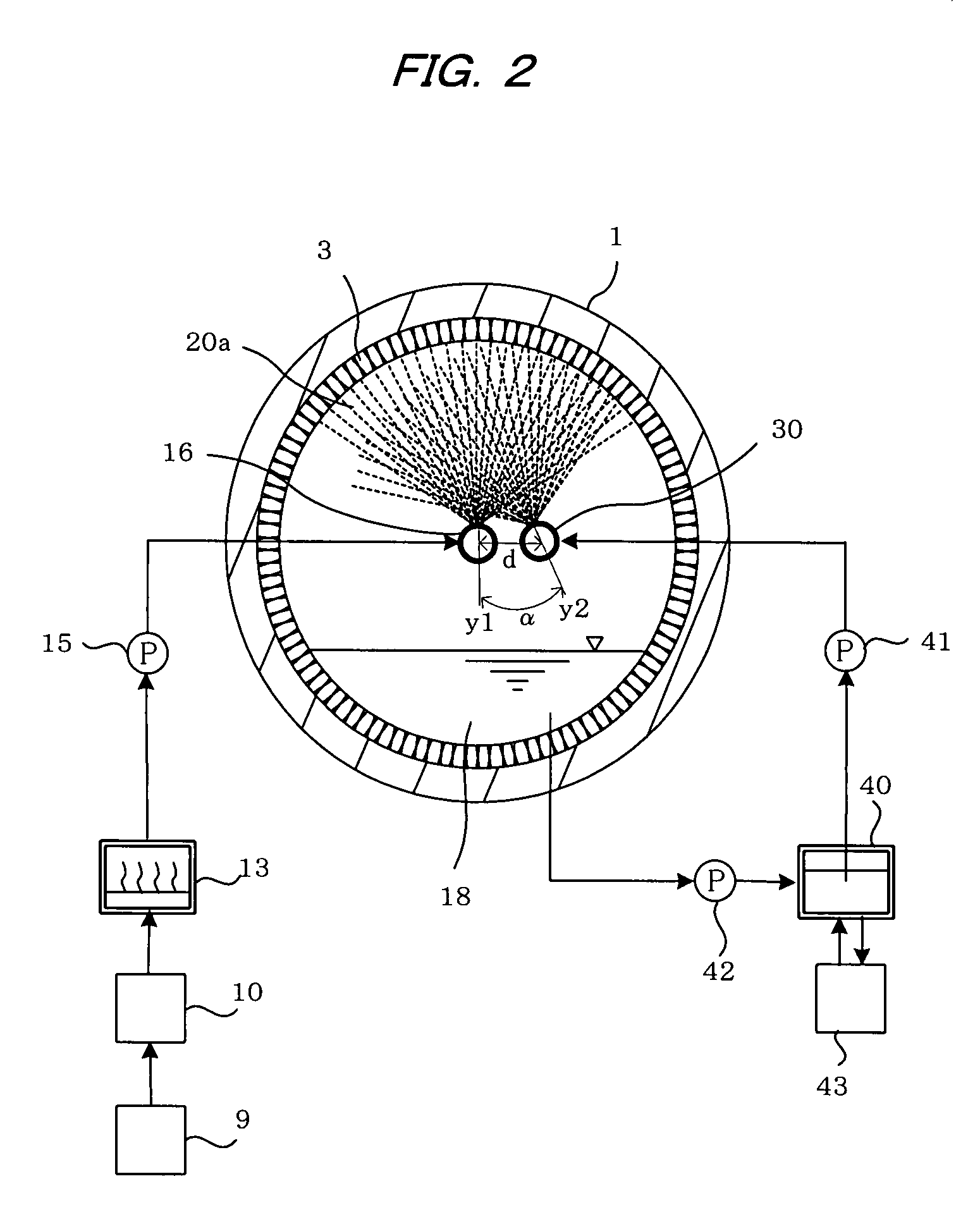Pipeline lining method
a technology of pipe lining and pipe lining, which is applied in the direction of lamination, coating, chemistry apparatus and processes, etc., can solve the problems of reducing the amount of road space used at a construction site, reducing the amount of water consumed by the construction project, and improving the characteristics of the cured pipe lining material
- Summary
- Abstract
- Description
- Claims
- Application Information
AI Technical Summary
Benefits of technology
Problems solved by technology
Method used
Image
Examples
Embodiment Construction
[0027]The present invention will now be described in detail with reference to the embodiments shown in the accompanying drawings.
[0028]FIG. 1 is a cross-sectional view showing a pipeline lining method. The reference symbol 1 indicates a sewer pipe or another aging pipeline buried under ground. When the pipeline is repaired, a flexible tubular pipe lining material 3 is first set at the entry of the pipeline 1 from a manhole 2 that is in communication with the pipeline 1, and compressed air or another pressurized medium is enacted upon a pressure container 4 from an air compressor 5 via a pipe 6. This causes the pipe lining material 3 to be turned inside out and inserted into the pipeline 1.
[0029]The lining material 3 is made of a non-woven fabric composed of polyester, vinylon, acrylic, or another fiber that is sewn into a tubular shape to form a flexible tubular resin-absorbing material. The lining material 3 is impregnated with unsaturated polyester resin, vinyl ester resin, epoxy ...
PUM
| Property | Measurement | Unit |
|---|---|---|
| temperature | aaaaa | aaaaa |
| temperature | aaaaa | aaaaa |
| temperature | aaaaa | aaaaa |
Abstract
Description
Claims
Application Information
 Login to View More
Login to View More - R&D
- Intellectual Property
- Life Sciences
- Materials
- Tech Scout
- Unparalleled Data Quality
- Higher Quality Content
- 60% Fewer Hallucinations
Browse by: Latest US Patents, China's latest patents, Technical Efficacy Thesaurus, Application Domain, Technology Topic, Popular Technical Reports.
© 2025 PatSnap. All rights reserved.Legal|Privacy policy|Modern Slavery Act Transparency Statement|Sitemap|About US| Contact US: help@patsnap.com



